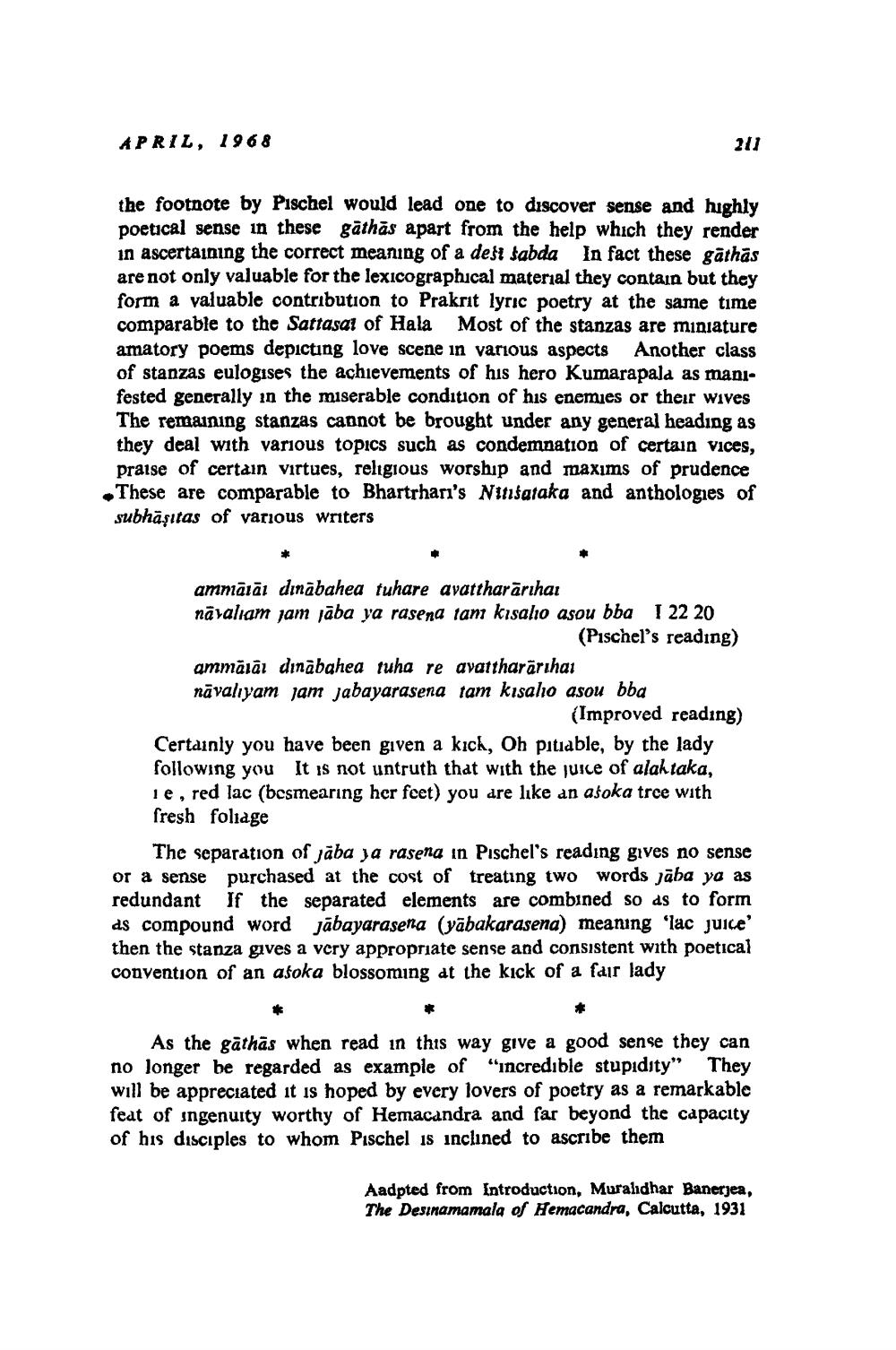________________
APRIL, 1968
211
the footnote by Pischel would lead one to discover sense and highly poetical sense in these găthās apart from the help which they render in ascertaining the correct meaning of a dest sabda In fact these găthas are not only valuable for the lexicographical material they contain but they form a valuable contribution to Prakrit lyric poetry at the same time comparable to the Sattasal of Hala Most of the stanzas are miniature amatory poems depicting love scene in various aspects Another class of stanzas eulogises the achievements of his hero Kumarapala as manifested generally in the miserable condition of his enemies or their wives The remaining stanzas cannot be brought under any general heading as they deal with various topics such as condemnation of certain vices, praise of certain virtues, religious worship and maxims of prudence These are comparable to Bhartrhan's Ninjataka and anthologies of subhāşıtas of various writers
ammālāt dinābahea tuhare avattharârihai nävaliam jam jāba ya rasena tan kısalio asou bba 1 22 20
(Pischel's reading) ammālal dinābahea tuha re avattharârihai nāvalıyam jam jabayarasena tam kisaho asou bba
(Improved reading) Certainly you have been given a kich, Oh pitiable, by the lady following you It is not untruth that with the juice of alah taka, ie, red lac (besmearing her feet) you are like an asoka trce with fresh foliage
The separation of jāba ja rasena in Puschel's reading gives no sense or a sense purchased at the cost of treating two words jāba ya as redundant If the separated elements are combined so as to form as compound word jābayarasena (yābakarasena) meaning 'lac juice then the stanza gives a very appropriate sense and consistent with poetical convention of an asoka blossoming at the kick of a fair lady
As the gathās when read in this way give a good sense they can no longer be regarded as example of "incredible stupidity" They will be appreciated it is hoped by every lovers of poetry as a remarkable feat of ingenuity worthy of Hemacandra and far beyond the capacity of his disciples to whom Puschel is inclined to ascribe them
Aadpted from Introduction, Muralidhar Banerjea, The Desinamamala of Hemacandra, Calcutta, 1931




